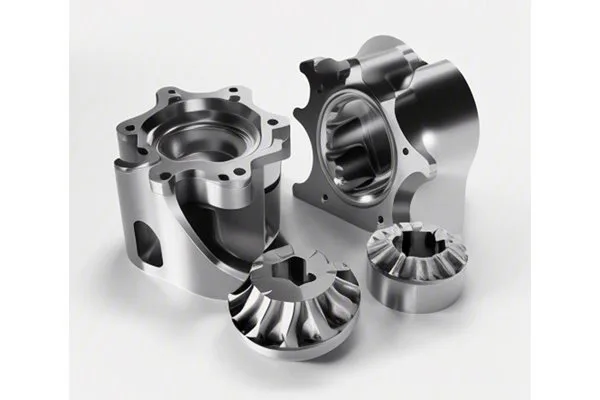:
Have you ever wondered why your metal components are not showing the brilliant finish you expected after electroplating? Studies have shown that nearly 30% of all electroplating operations encounter performance issues that can largely be traced back to the preparation of the metal substrate. With brass being a widely used material in various industries—from automotive components to decorative fixtures—understanding the factors that contribute to poor electroplating effects after CNC machining is crucial. This blog will dive deep into the reasons behind this issue, uncover effective solutions, and empower you to achieve the quality results you desire.
The Brass CNC Machining and Electroplating Landscape
Before understanding why electroplating fails after CNC machining, let’s explore the relationship between these two processes. CNC (Computer Numerical Control) machining is a modern manufacturing tech that automates the operation of machinery. When it comes to brass—an alloy mostly comprised of copper and zinc—its unique properties make it a favored choice for precision parts that require durability and corrosion resistance. However, reaching a successful electroplated finish can be riddled with challenges.
Electroplating is a method of depositing a layer of material onto a substrate to improve properties such as resistance to corrosion, wear, or friction. Combining brass with electroplating can produce aesthetically pleasing and long-lasting components, provided the surfaces are adequately prepped. Poor electroplating often results from inadequate surface finishing during CNC machining or incorrect post-machining treatments.
Reasons for Poor Electroplating Effects
CNC machined brass often comes with burrs, tool marks, or irregularities on the surface. These imperfections can trap air or create barriers during the electroplating process. Inadequate cleaning before plating can leave behind oils, dust, or metal shavings, preventing proper adhesion of the electroplated layer.
Chemical residues from machining fluids or inadequate cleaning agents can lead to contamination of the brass surface, severely impacting the plating quality. Moreover, environmental factors like dust and moisture in the workspace can create additional layers of contamination during handling.
Parameters like cutting speed, feed rate, and tool material influence the final surface quality of the machined part. Too aggressive machining can lead to excessive heat generation, causing micro-cracking or subsurface damage, which poses significant issues for any subsequent plating.
An unsuitable surface finish can be detrimental. The International Organization for Standardization (ISO) suggests that a surface roughness average (Ra) of around 0.8 micrometers or less is typically adequate for most plating applications. Rougher surfaces can create weak spots that can degrade over time.
Using improper tools or techniques unsuitable for brass can yield undesired results. It’s essential for machinists to select tools optimized for brass CNC machining to maintain the desired surface quality.
The electroplating solution, temperature, current density, and time are all factors that need precise adjustments. If any of these variables are not controlled adequately, it can lead to poor adhesion, pitting, or a dull appearance.
Brass is sensitive to thermal variations. Repeated heating and cooling cycles during machining can change the composition and mechanical properties, impacting electroplating quality.
Different brass alloys exhibit varying degrees of electroplating success. The presence of other elements like lead or tin can negatively impact the electroplating process.

Solutions to Enhance Electroplating Quality Post CNC Machining
Selecting the optimal machining parameters (cutting speed, feed rate, and tooling) for brass is critical. It’s advisable to perform trials to identify the best configurations to deliver a smoother surface.
Adopt strict protocols for cleanliness. This includes wearing gloves during handling and securing work areas to prevent contamination from dust and oils.
Use polishing and surface finishing techniques post-CNC machining to attain the target Ra value conducive for electroplating.
Utilize specialized tools designed for brass CNC machining, such as those made of high-speed steel or carbide, to achieve a better surface finish.
Ensure that any required pre-treatment, such as pickling or etching, is performed appropriately before electroplating to promote adhesion.
Employ rigorous controls on the electroplating parameters—this includes verifying product temperature, current density, and correct solution composition before beginning the plating process.
If possible, choose brass alloys specifically noted for better electroplating effects. Engage in discussions with suppliers for optimal material recommendations.
: Mastering the Art of CNC Machining and Electroplating
The challenges of achieving a quality finish after brass CNC machining and subsequent electroplating are numerous but not insurmountable. Gaining insights into the factors affecting electroplating, such as surface preparation, contamination, machining parameters, and optimal processes, is crucial for success. By implementing the outlined solutions, you can significantly improve the electroplating quality of your CNC machined brass components.
In essence, the interrelationship between CNC machining and electroplating warrants careful consideration. By mastering these elements, professionals can ensure the functionality and aesthetic appeal of their products.
As we continue to innovate in manufacturing technologies, understanding the nuances of these processes not only saves costs but ensures high-quality outcomes. As you reflect on the content of this blog, remember the importance of attention to detail in each phase of production. Quality assurance in CNC machining and electroplating goes beyond just following a procedure; it’s about cultivating a mindset focused on excellence for sustainable growth in your operations.






